What exactly is 5G LAN?

What exactly is 5G LAN?
In today's article, let's talk about 5G LAN.
If you have a little understanding of communication technology, you will find that 5G LAN is actually a very interesting concept.
Everyone should be familiar with 5G, which is the evolution of 4G and our latest mobile communication technology.
For LAN, we should be more familiar with it. Its full name is local area network, which is the local area network. Our home network, as well as the network in the company office, are basically LAN. With wireless Wi-Fi, it is Wireless LAN (WLAN).
So why do I say 5G LAN is interesting?
Because 5G is a wide-coverage cellular communication network, while LAN is a small-scale regional data communication network. The two technologies do not seem to be related.
In other words, the words 5G and LAN are known separately. But when put together, it's a bit confusing. isn't it?
5G LAN, what is it?
In fact, 5G LAN, simply put, is to use 5G technology to "group" and "group" terminals to form a LAN network.
Everyone has a 5G phone. When using 5G mobile phones, have you found that no matter how close you are to your friends (even face to face), your mobile phone cannot search for each other? The reason why you can communicate with each other is because the data flows to the server of the operator or Internet service provider and goes around in a circle.
For the base station, all mobile terminals are "isolated". This is based on security considerations. Each mobile phone uses its own channel and does not interfere with each other.
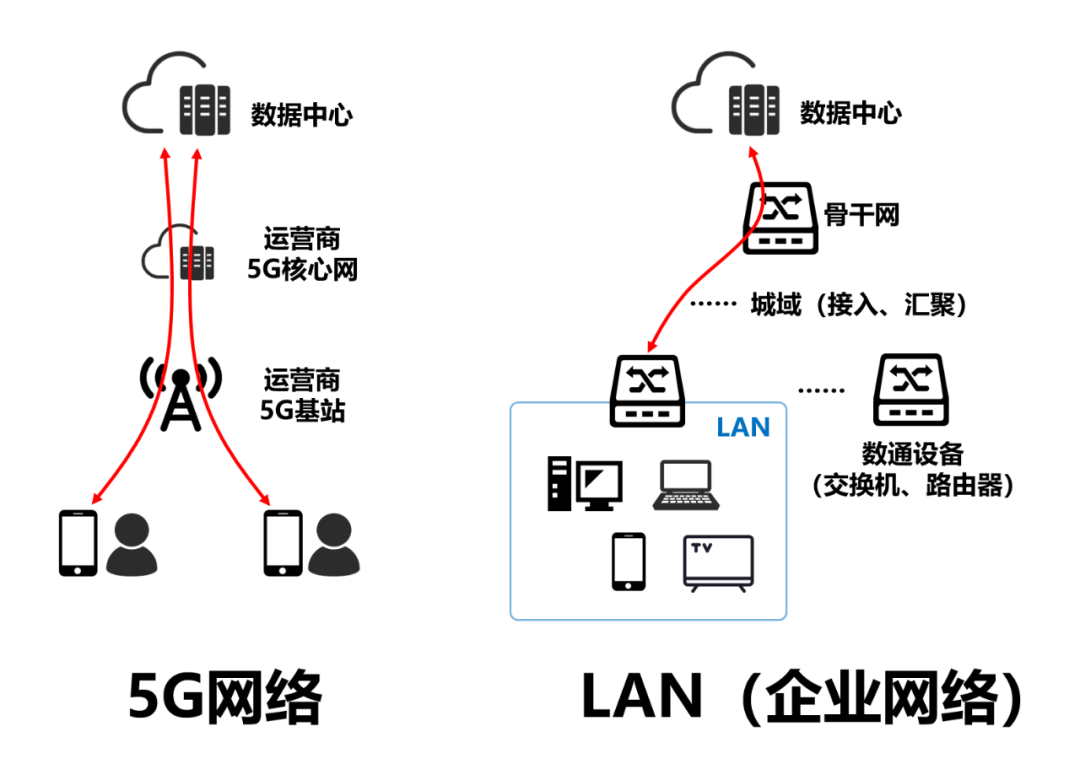
As for the LAN, the terminals (mobile phones, computers, etc.) in the area are connected together and become a "group". This not only facilitates mutual data transmission, but also saves the external network exit.
In a LAN, terminals can find each other through MAC addresses and find each other (layer 2 communication). To access the external network, a router can be set up, and routing in and out (layer three communication) can also be achieved through IP address selection.
We all know that "4G changes life, 5G changes society". As the most mainstream mobile communication technology at present, 5G shoulders the mission of "interconnecting all things, helping hundreds of industries to digitally transform", and needs to help users in vertical industries get connected.
Then, 5G can not only open up the connection between each terminal and the cloud, but also realize the "nearest connection" between terminals.
Therefore, in the 3GPP R16 standard, a new feature function of 5G LAN was introduced.
Principles and Features of 5G LAN
In the 5G network, the administrator can modify the data in the user database (UDM network element), and sign the service subscription for the specified terminal (UE) number, so as to assign them to the same or different VN Group (Virtual Network Group, virtual network). group).
The user database will provide VN group information of terminal numbers and access policies to the management network elements (SMF, AMF, PCF, etc.) of the 5G core network (5GC). Based on these information and policy rules, management network elements form different LANs. This is 5G LAN.
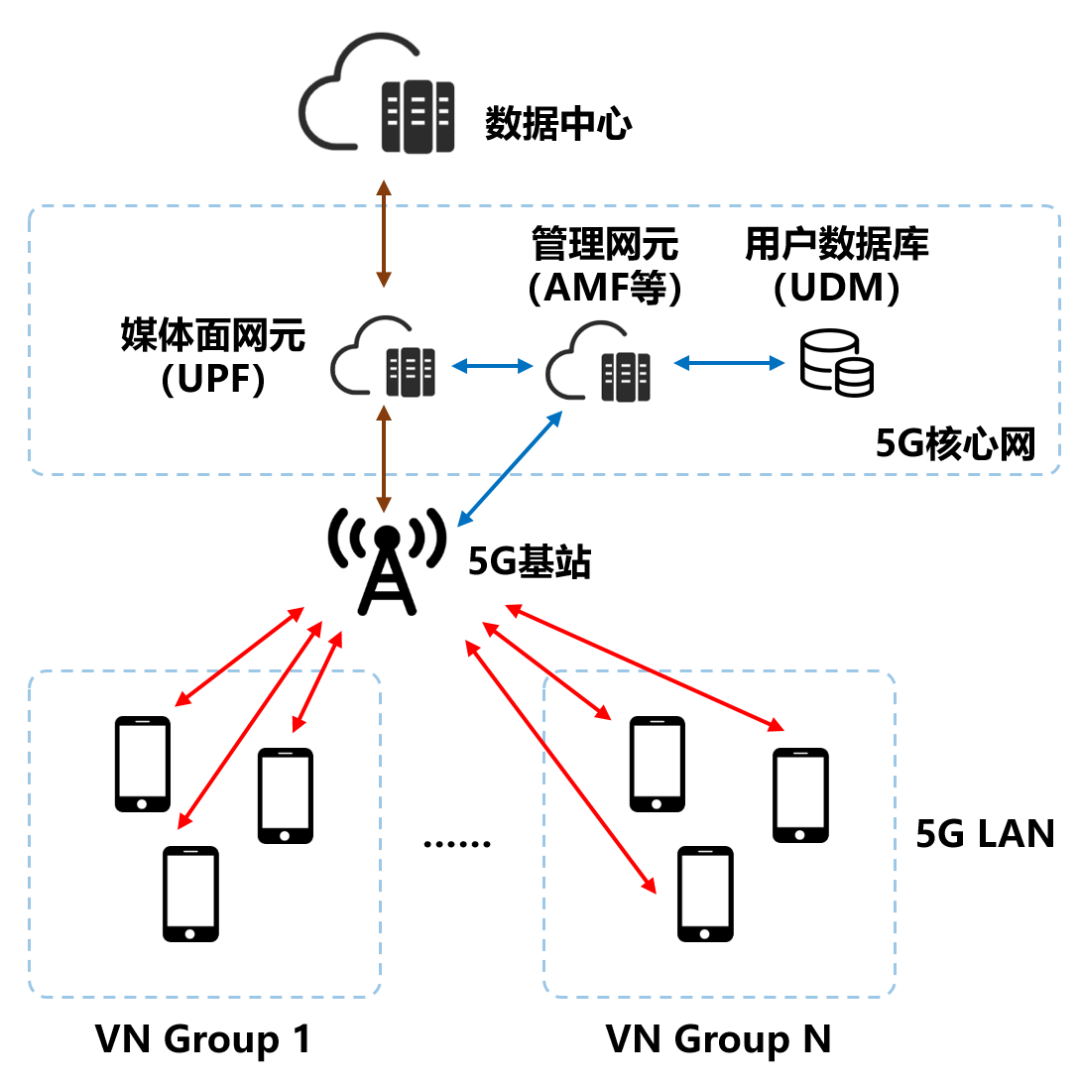
Schematic diagram of 5G LAN network architecture
5G LAN supports Layer 2 communication (the same network segment, direct access to each other) and Layer 3 communication (cross-network segment, with the help of routing). 5G LAN supports unicast as well as multicast and broadcast. In short, the mutual access method is very flexible, and the networking is also very simple.
In terms of scope, 5G LAN supports not only mutual communication under the same UPF (media plane network element of the 5G core network), but also mutual communication under different UPFs. This is equivalent to breaking the physical distance limit between terminals (even Beijing and Shanghai can communicate).
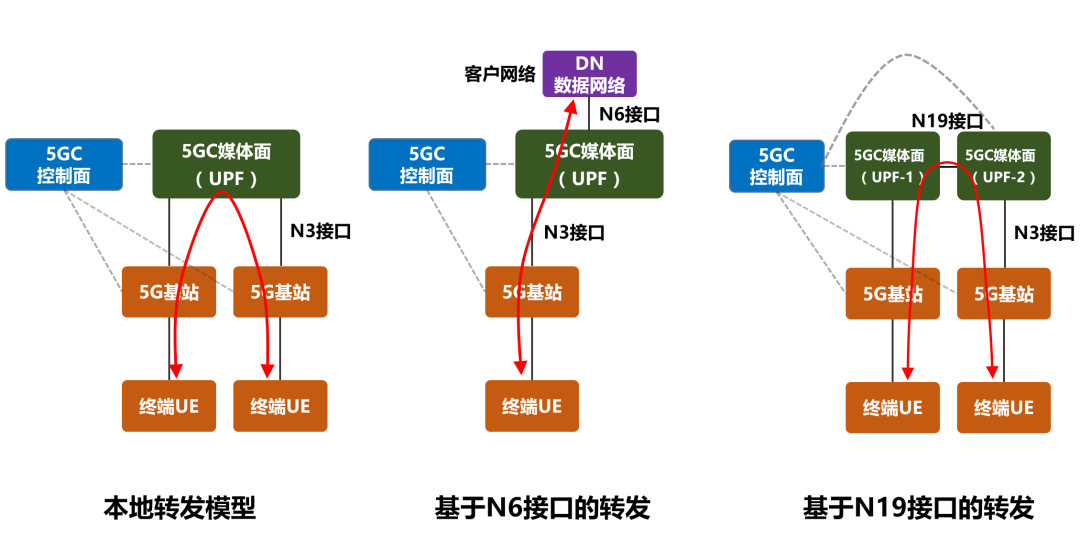
A particularly important point is that the network established by 5G LAN can be connected with the user's existing data network to achieve plug-and-play and mutual access.
Application scenarios and advantages of 5G LAN
5G LAN realizes the grouping and connection between designated 5G terminals, which greatly facilitates enterprises to build a more mobile LAN network. Many readers will definitely ask, isn't the existing Wi-Fi technology already able to achieve mobility? Why do you still need 5G LAN?
Don't worry, let's move on.
The local networking implemented by 5G LAN can help users such as enterprises, schools, governments, and families to better interconnect terminals within a region. It can be used for office networks, but its greater value lies in the transformation of the production environment in the park, and the transformation of the grassroots network of production-oriented enterprises such as industrial manufacturing, port terminals, and energy mines.
We are all promoting the Industrial Internet. We believe that 5G can enable the digitization of industrial scenarios because 5G has the characteristics of large bandwidth and low latency. It is an excellent wireless communication technology that can realize wireless connection of various production elements in industrial scenarios.
Take industrial manufacturing as an example. In the past, in order to better automate and realize equipment control, the "industrial bus" technology was used. There are many types of this technology, which can be described as "various".
Later, with the emergence of Ethernet and IP technologies, a consensus was formed in the industry, and the evolution to Ethernet together gave rise to "Industrial Ethernet". Now, no matter whose industrial interconnection protocol is based, it is basically based on Ethernet.
Later, industrial companies discovered that wired connections were too restrictive for mobility—there was always a “braid” behind the device, preventing free movement.
Moreover, the wired connection deployment method is cumbersome, the construction period is long, and the cost is high. Once there is a problem with equipment or cables, replacement is also very delayed. Therefore, the industry began to consider the introduction of wireless communication technology.
As a result, technologies such as Wi-Fi and Bluetooth have entered the industrial field.
So, back to the previous question, since there is Wi-Fi, why 5G LAN?
The reasons are as follows:
1. The performance of Wi-Fi networks (especially Wi-Fi 4 and Wi-Fi 5) is not as good as 5G.
In terms of transmission rate and delay, 5G can better meet the needs of industrial robots (manipulator control), intelligent quality inspection (high-speed image recognition), and AGV (unmanned logistics vehicles).
In terms of coverage, 5G has a larger coverage than Wi-Fi and can better cover the campus. The inter-cell handover capability of 5G is also stronger than that of Wi-Fi, which can bring users a better network experience.
Second, Wi-Fi network maintenance costs are high.
To build a campus Wi-Fi network, enterprises need to install their own wiring and buy their own equipment. The equipment is depreciated, damaged, replaced, and maintained by special personnel. Massive Wi-Fi devices, configuration is also very troublesome.
5G is different. It is built and maintained by the operator, and the enterprise is rented (Wi-Fi compared to 5G, a bit like self-built computer room compared to cloud computing).
Taken together, 5G will be more cost-effective.
3. The functions of 5G LAN are more powerful.
The VN grouping of 5G LAN was mentioned earlier. In addition to isolating communication, a more important role of grouping is to achieve QoS (class of service) differentiation of different networks.
For example, there are office networks, IT system networks, and OT networks within an enterprise.
OT is Operational Technology, operational technology (operational technology). In fact, it is a network connecting industrial environments and equipment, such as lathes, robotic arms, sensors, instrumentation, AGV, monitoring systems, MES, PLC, etc.
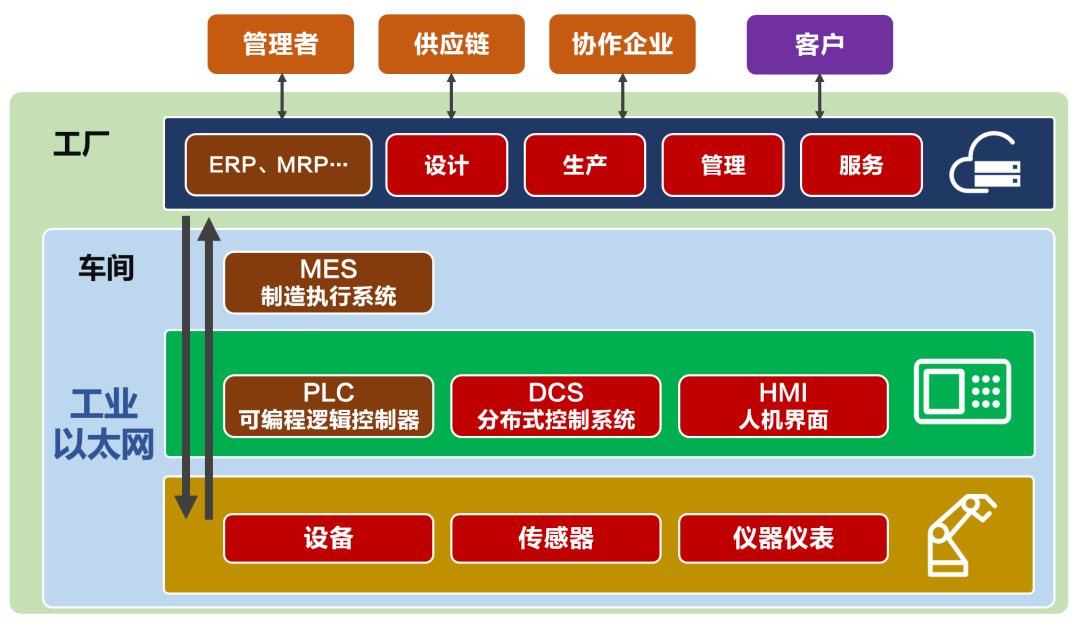
Different networks have different performance requirements. Some require low latency, some require large bandwidth, and some do not have so many requirements.
On the basis of grouping, 5G LAN can define different network performance for different VN groups. Some companies call it "micro-slicing".
Fourth, 5G LAN is easier to manage and more secure.
We mentioned earlier that user subscription data can be modified in the operator's 5G UDM network element to group users into VN groups. So, every time we need to change the grouping information of a terminal (add, delete, change), do we have to ask the operator's customer service?
Of course not.
The operator's 5G network can open the modification authority to the enterprise network manager by developing the interface to realize self-service modification.
Of course, enterprises can also set their own private network policies according to their own needs.
When establishing a data connection, enterprises can also set up authorization and authentication mechanisms to strictly manage VN groups. This security is much stronger and more convenient than Wi-Fi.
5G LAN case study
Next, let's take a look at the benefits of 5G LAN through a specific networking case.
First of all, a manufacturing enterprise has its own workshop, production line (or lathe), and needs to connect the PLC and the PLC control terminal through the network.
Each pipeline has many devices and is also independent. It is ideal to install 5G modules on each device in the assembly line. However, at this stage, the cost seems to be a little expensive.
Then, we introduce 5G industrial gateway, or 5G CPE, which can improve the cost performance. It is suitable for wired connection to wired port (Ethernet port, or PLC port). Suitable for wireless, connect to 5G or Wi-Fi.
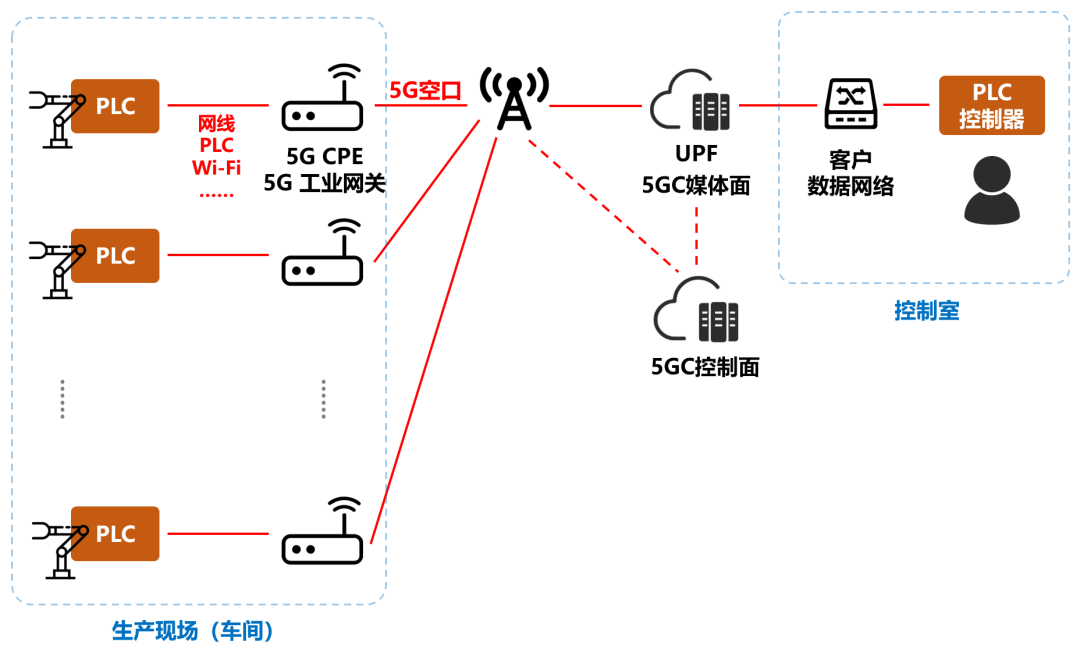
If 5G does not support 5G LAN (before R16), it is also possible to realize the connection between PLC and PLC controller. However, the entire 5G network relies on a Layer 3 protocol for IP addressing, and the terminal address is also an IP address, which does not support Layer 2 data forwarding. In order to realize end-to-end communication, it is necessary to add an AR (Access Router, access router) on both sides to establish a tunnel, encapsulate the industrial Layer 2 protocol in the tunnel, and bring it to the opposite end.
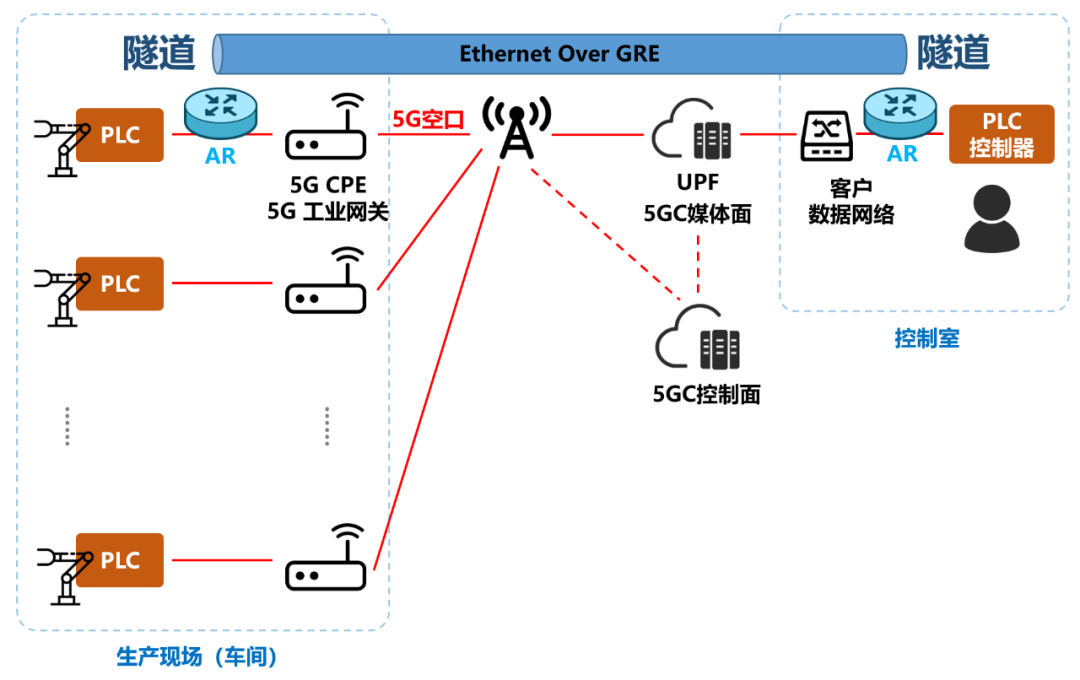
This method not only increases the complexity, but also increases the cost (AR router purchase cost, AR router configuration labor and time cost). Just imagine, if the workshop has thousands of assembly lines, then this cost will be very staggering.
After the introduction of 5G LAN, the 5G network supports the direct transmission of Layer 2 protocols, so AR routers are no longer required. At the same time, the 5G network can provide routes for terminals without IP addresses, and the UPF can identify the MAC addresses of the terminals. The entire network becomes a very simple single-layer network, which communicates with each other at Layer 2.
The plug-and-play capability of 5G LAN can perfectly integrate itself with the customer's existing network, which reduces the impact on the customer's existing network, does not require strenuous transformation and upgrades, and can save a lot of costs.
From a macro perspective, 5G LAN is a collaboration between 5G and Ethernet technologies. In the future, TSN (Time Sensitive Networking) technology based on Ethernet technology will also be inseparable from the help of 5G LAN.
It is worth mentioning that, in addition to facilitating the construction of the internal network of the campus, 5G LAN can also be used as a supplement to the traditional private line network of enterprises to connect branches in different places.
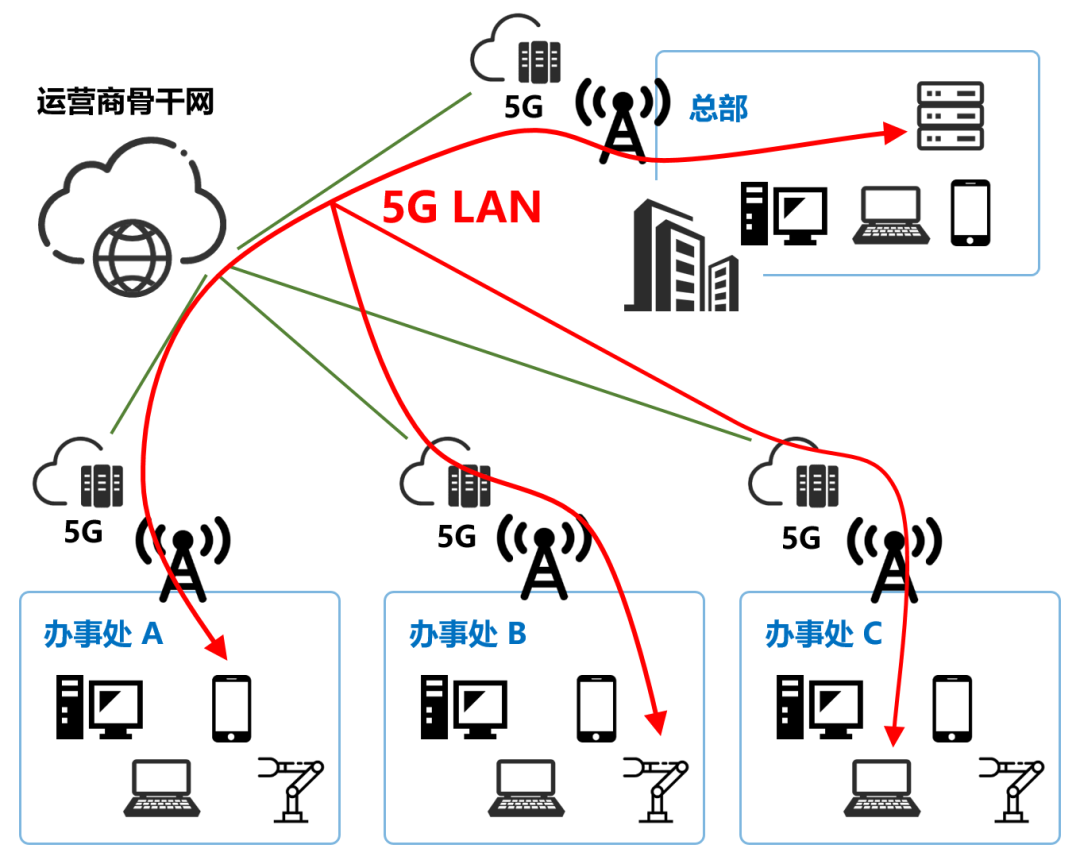
5G LAN module
As you can see, 5G LAN is an important innovative technology for 5G to be implemented in vertical industries. It can build more powerful 5G private network communications to help customers accelerate digital transformation and upgrading.
In order to better deploy 5G LAN, in addition to network side upgrades, the support of 5G modules is also required.
In the process of commercialization of 5G LAN technology, UNISOC launched the industry's first 5G R16 Ready baseband chip platform - V516.
Based on this platform, Quectel, a leading domestic module manufacturer, has successfully developed a number of 5G modules that support 5G LAN technology and have been commercialized, including RG500U, RG200U, RM500U and other LGA, M. 2. Mini PCIe package module.
These modules have high reliability and can achieve ms-level air interface delay and 5G network timing with an accuracy of 1us, which can better meet the requirements of high-precision machine collaboration in industrial manufacturing, multi-vehicle collaboration in warehousing and logistics, and differential protection of smart grids. Industrial Internet industry application requirements.
In Ningbo, Zhejiang, a well-known enterprise used Quectel's 5G LAN module to build a 5G fully-connected factory and completed the country's first 5G LAN commercial pilot.
As an automobile aluminum alloy precision die casting manufacturer, the enterprise focuses on the field of automobile parts manufacturing and is a typical discrete manufacturing enterprise.
The six factories under it are scattered in different locations in an industrial park in Ningbo. 5G LAN technology has helped these factories to achieve more flexible connections, increased the efficiency of factory production line adjustment by 70% (7 days → 2 days), and doubled the delivery efficiency of MES networking (6 months → 3 months) , the annual saving of tunnel configuration and maintenance work is about 750 man-days.
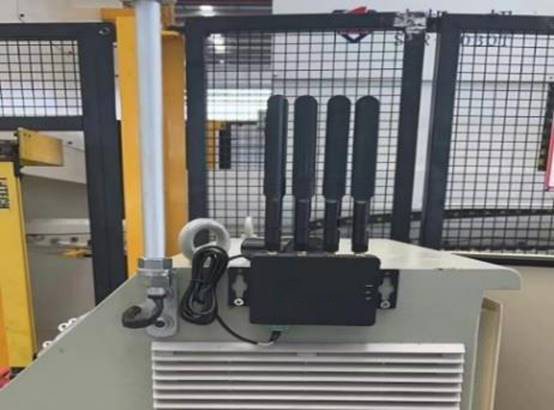
5G equipment installed in the factory of a well-known enterprise
Here, "5G+Industrial Internet" truly realizes the empowerment of "flexible production".
5G LAN has also been successfully implemented in projects such as a car brand, a smart building in a university, and a flexible factory in an industrial enterprise. In the future, 5G LAN will appear more in our field of vision, enabling the digital transformation of hundreds of thousands of parks in China.
Epilogue
The Industrial Internet is the cornerstone of the fourth industrial revolution. The technological innovation of 5G private networks like 5G LAN is of great significance to the comprehensive digitalization, networking and intelligence of the industrial field.
With the freezing of the 5G R17 version, we have gradually ushered in the 5G-Advanced era. New excitement continues, and new technological innovations continue to emerge.
The accumulated innovation will eventually lead mankind to the "Intelligent Connectivity of All Things". let us wait and see!